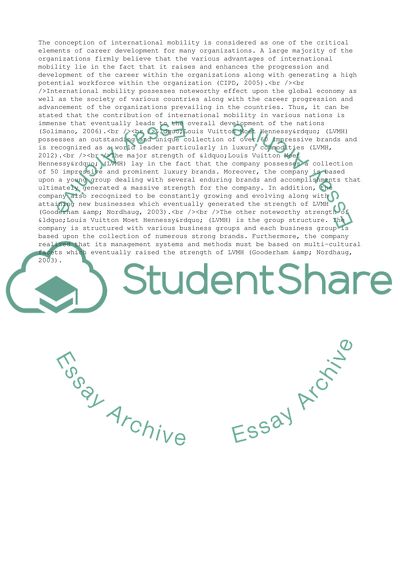Cite this document
(Career Development through International Mobility: Louis Vuitton Moet Case Study Example | Topics and Well Written Essays - 1500 words, n.d.)
Career Development through International Mobility: Louis Vuitton Moet Case Study Example | Topics and Well Written Essays - 1500 words. https://studentshare.org/business/1768760-career-development-through-international-mobility
Career Development through International Mobility: Louis Vuitton Moet Case Study Example | Topics and Well Written Essays - 1500 words. https://studentshare.org/business/1768760-career-development-through-international-mobility
(Career Development through International Mobility: Louis Vuitton Moet Case Study Example | Topics and Well Written Essays - 1500 Words)
Career Development through International Mobility: Louis Vuitton Moet Case Study Example | Topics and Well Written Essays - 1500 Words. https://studentshare.org/business/1768760-career-development-through-international-mobility.
Career Development through International Mobility: Louis Vuitton Moet Case Study Example | Topics and Well Written Essays - 1500 Words. https://studentshare.org/business/1768760-career-development-through-international-mobility.
“Career Development through International Mobility: Louis Vuitton Moet Case Study Example | Topics and Well Written Essays - 1500 Words”. https://studentshare.org/business/1768760-career-development-through-international-mobility.


